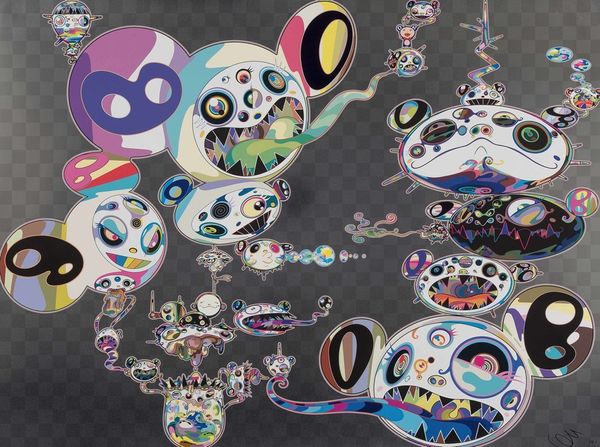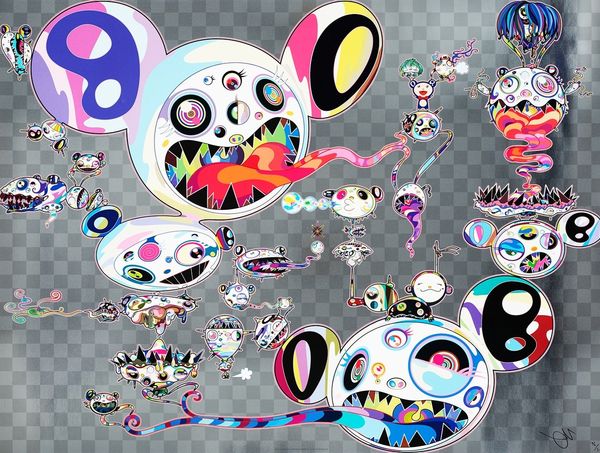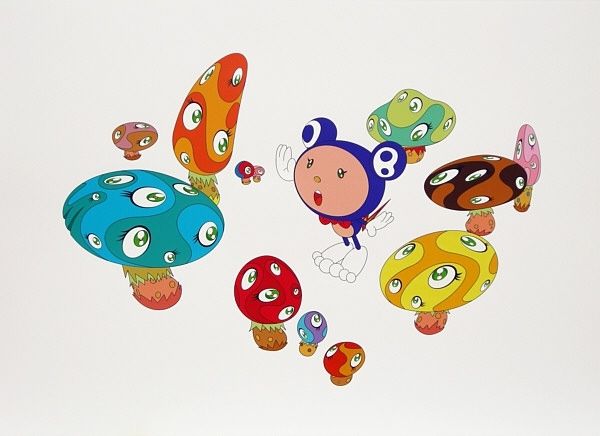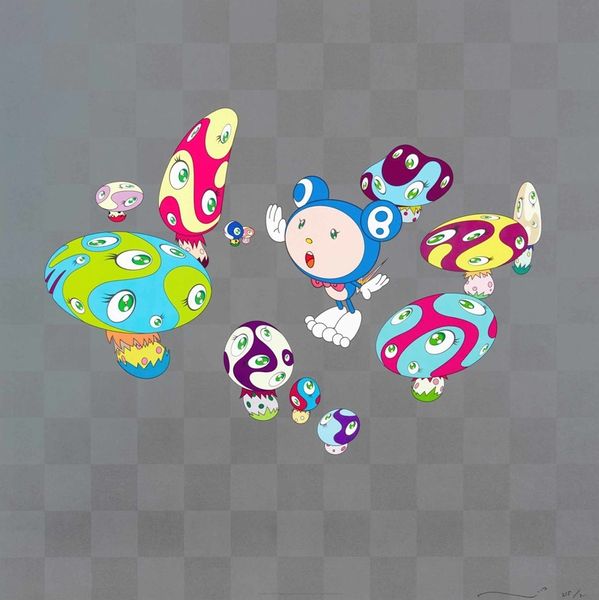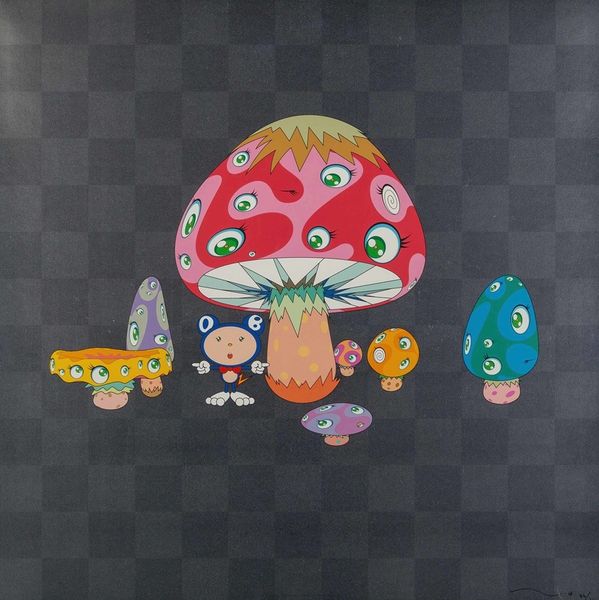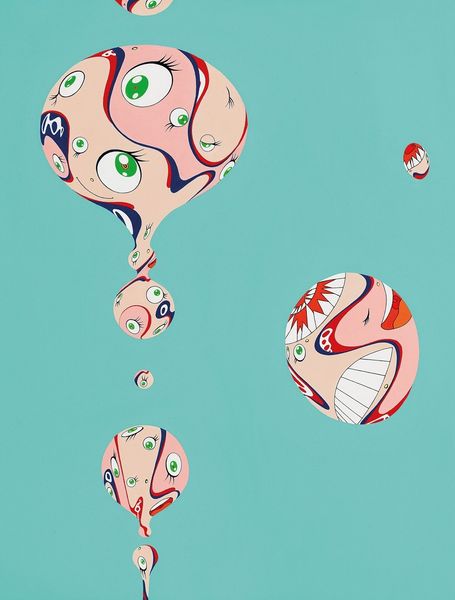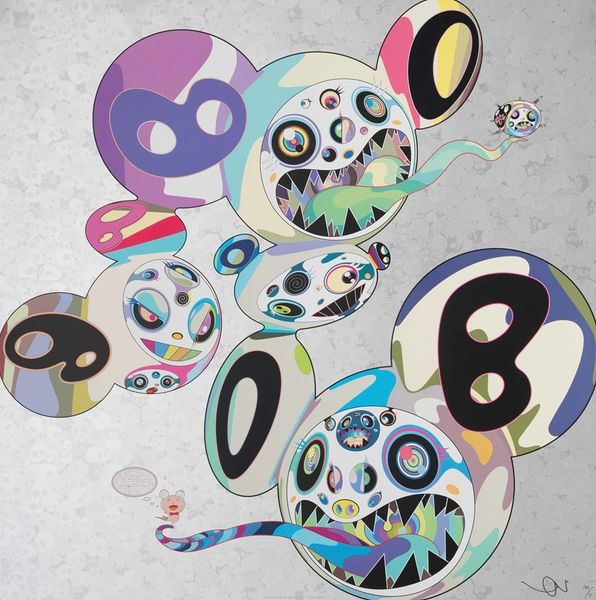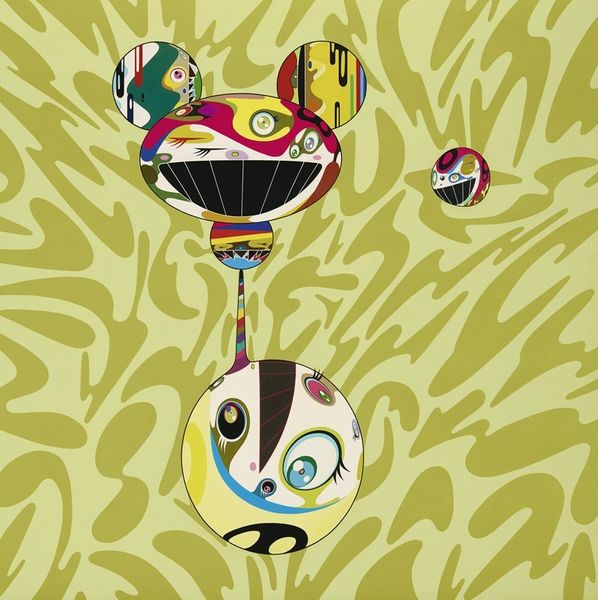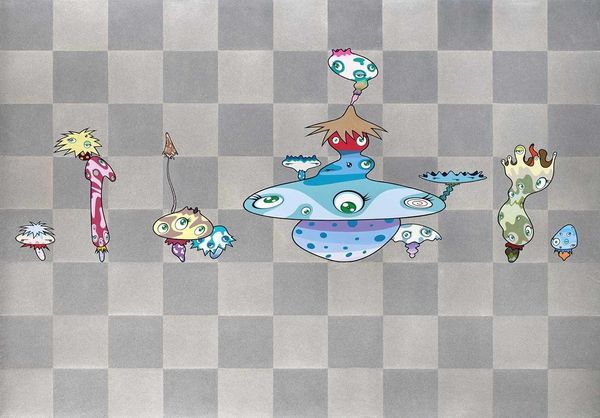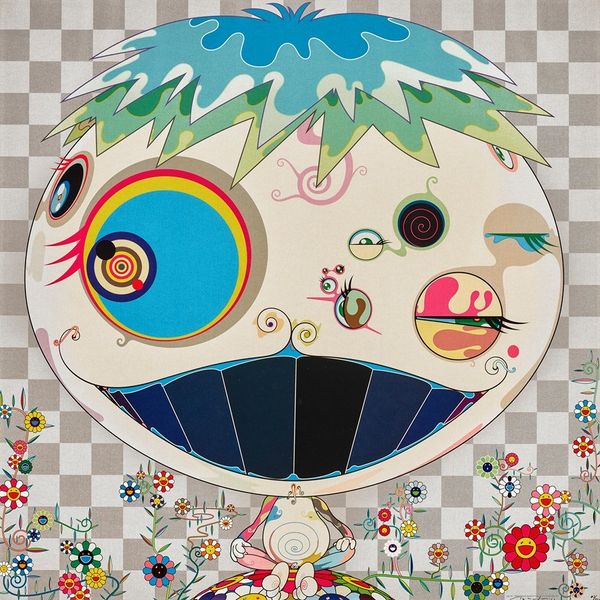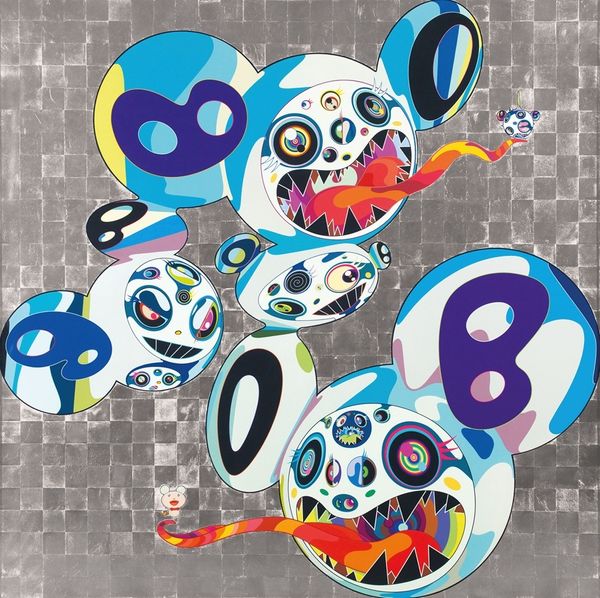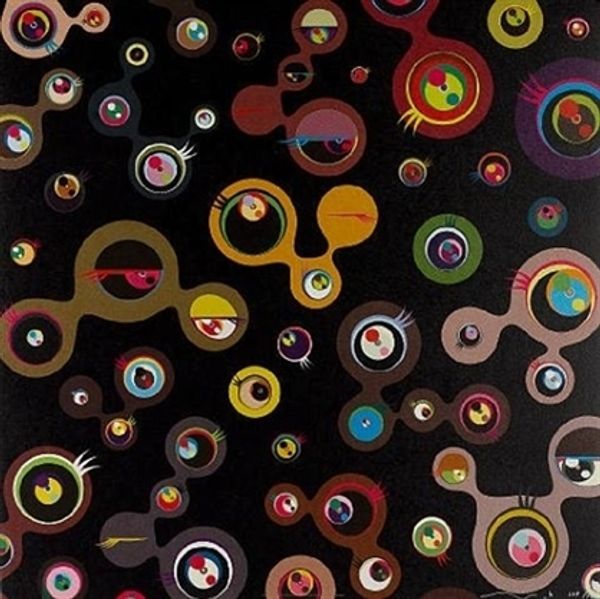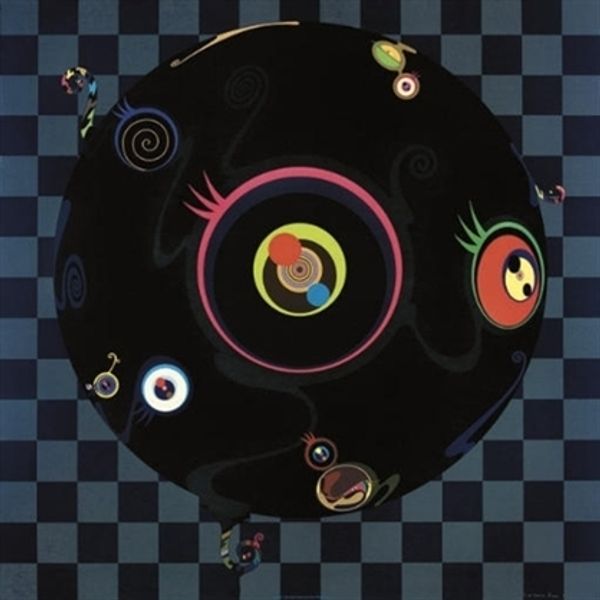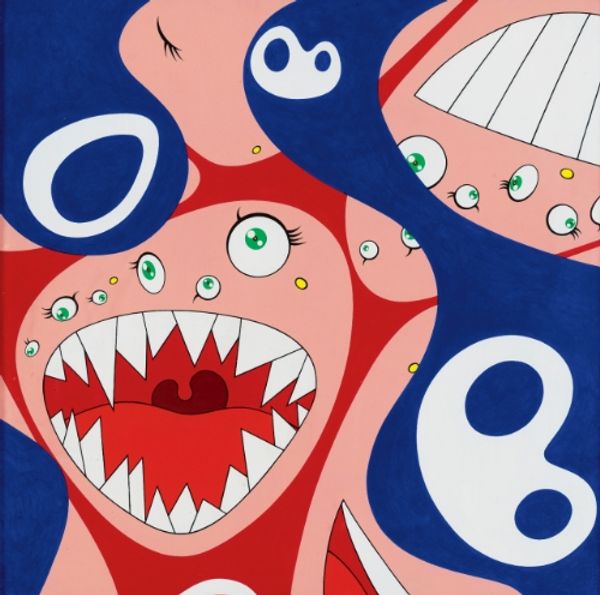
#
neo-pop
Copyright: Modern Artists: Artvee
Curator: Here we have Takashi Murakami's "Mushroomers," created in 2003. Painted in acrylic, it exemplifies his unique blend of pop art and surrealist elements. What do you make of it? Editor: Initially, it feels almost alien, doesn’t it? The floating, disembodied forms against that dark, subtly patterned background. It’s both whimsical and a little unsettling. The shapes, those ovoid forms with staring eyes, definitely capture my attention. Curator: It’s important to consider Murakami’s Superflat aesthetic in this context. He collapses traditional notions of depth and perspective, flattening hierarchies between high and low art, much like Warhol did. Notice how he integrates elements of Japanese manga and anime, popular culture forms traditionally marginalized by the art world. Editor: I see that flattened perspective, it's almost like looking at decals on a sheet, with that meticulous, almost clinical line work defining each shape so precisely. What about the repetitive eyes? There's a kind of insistent gaze that both attracts and repels me. It's semiotically very loaded. Curator: The eyes are a recurring motif in Murakami’s work. Some see them as symbols of self-awareness, of seeing and being seen in our increasingly mediated world. Others view them as commenting on consumerism and the all-seeing eye of mass media, mirroring a world where surveillance and commercialism intertwine. The psychedelic colours enhance this sense of hyper-reality, typical of postmodern art. Editor: Yes, that makes sense. The bright colours seem to almost vibrate against that dark ground, it is optically stimulating. He's working with high contrast both in the colours and shapes. He also flattens any sense of traditional representation in the forms themselves - he gives us symbolic shapes that have only a superficial resemblance to natural mushrooms. Curator: And considering the date, 2003, we can think about the cultural context. Post 9/11, Japan was also in economic recession. Many interpret these hallucinatory landscapes as reflections of anxiety and escapism. The art world was globalising and blurring boundaries. Editor: Looking again, I notice the tension between the meticulously rendered forms and the overall surreal feel. It is an odd synthesis to say the least. It’s visually compelling, even if I can't say I fully understand it, that makes it an enduring image. Curator: Indeed. "Mushroomers" remains a powerful reflection of its time, challenging our expectations about art, culture, and society. A perfect postmodern work in every sense.
Comments
No comments
Be the first to comment and join the conversation on the ultimate creative platform.
